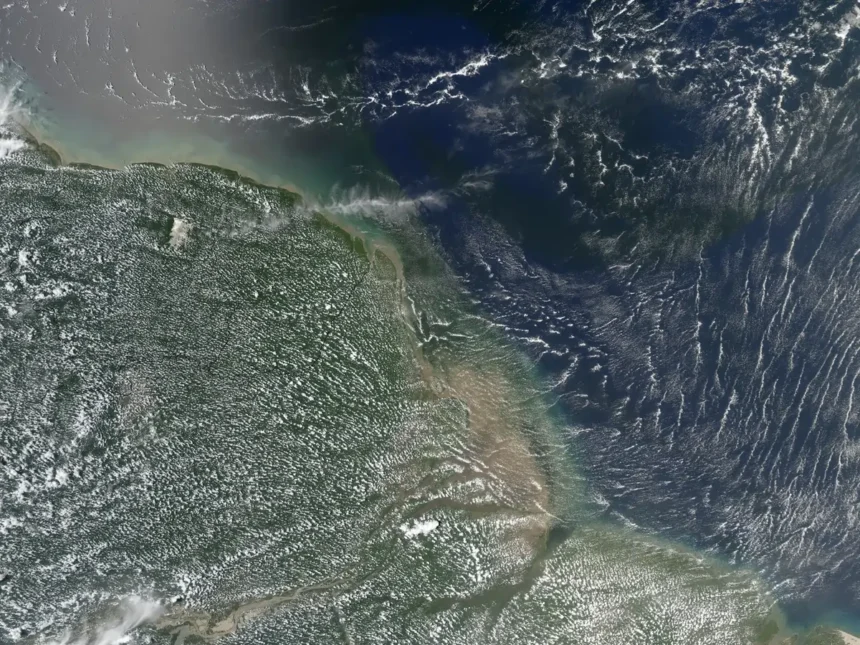⫸ Introduction to Freshwater and Saltwater Environments
Our planet’s water is a fascinating mix of two primary types: freshwater and saltwater. These distinct aquatic environments support vastly different ecosystems and play crucial roles in human life. Understanding the differences between freshwater vs. saltwater is essential for appreciating the delicate balance of our world’s water resources. Let’s dive into their definitions and explore the key factor that separates them.
Definition of Freshwater
Definition of Saltwater
Key Differences in Salinity
The most fundamental distinction between freshwater and saltwater lies in their salinity levels. Salinity is measured as the amount of dissolved salts in a volume of water. This difference in salinity profoundly impacts water’s physical properties, the organisms that thrive within it, and its suitability for various human uses.
⫸ The Global Distribution of Freshwater and Saltwater
Water is the lifeblood of our planet, but its distribution between freshwater and saltwater is strikingly uneven. Understanding where these essential resources are located is key to appreciating the delicate balance of Earth’s ecosystems and guiding our water management practices.
Where is Freshwater Found? (Lakes, rivers, groundwater)
Freshwater, defined by its low salt content, is a precious commodity. It exists in several main sources:
- Lakes: These bodies of water hold most of Earth’s surface freshwater. From the Great Lakes to small ponds, they are crucial for drinking water, recreation, and biodiversity.
- Rivers: Flowing waterways carry water across the land. They support ecosystems, transportation, and agriculture.
- Groundwater: This hidden resource lies beneath the surface, saturating rock and soil. Groundwater feeds wells and springs, making it vital for areas with limited surface water.
Where is Saltwater Found? (Oceans, seas)
Saltwater, with its higher salinity, dominates the planet. Its primary locations are:
- Oceans: The vast interconnected oceans cover about 71% of the Earth’s surface and are home to countless marine species.
- Seas: Smaller and sometimes partially enclosed by land, seas still contain highly saline water and unique marine life.
Percentage of Freshwater vs. Saltwater on Earth
The disparity between these types of water is staggering. Of all the water on Earth, approximately 97% is saltwater. Only about 3% is freshwater, and a significant portion of that is frozen in glaciers and ice caps. This highlights the scarcity of freshwater resources on which we depend heavily.
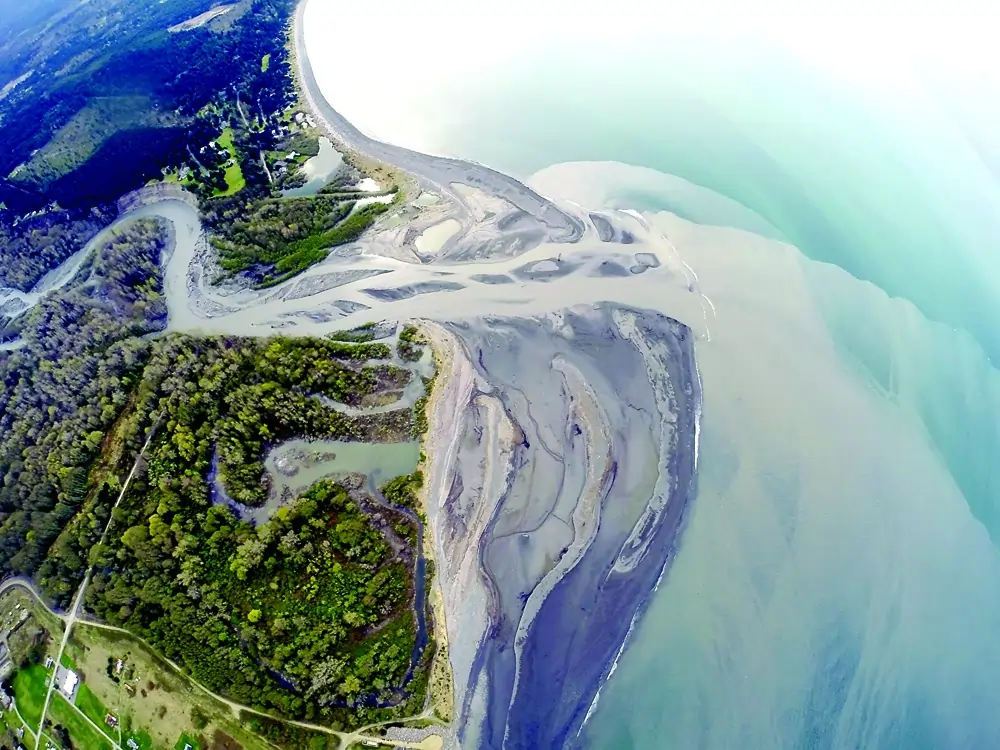
⫸ Freshwater vs. Saltwater: Hidden Differences
While fresh and saltwater appear similar at first glance, a deeper dive reveals a fascinating world of distinct properties. These differences, shaped by the presence or absence of dissolved salts, profoundly impact everything from how objects float to the types of life that can thrive within these aquatic environments.
This section will explore freshwater and saltwater’s unique characteristics, density, freezing and boiling points, and crucial role in osmosis, a vital process for living organisms. Understanding these properties will help us better appreciate the intricate dance between freshwater and saltwater that sustains our planet’s diverse ecosystems.
Density and Buoyancy
The first difference between fresh and saltwater is their density. Density refers to the mass of a substance per unit volume. In simpler terms, it’s how much “stuff” is packed into a specific space. Saltwater, due to the presence of dissolved salts, is denser than freshwater.
This difference in density significantly impacts buoyancy, the ability of an object to float. In saltwater, objects experience a greater upward force, making them easier to float than freshwater. This is why staying afloat in the ocean is easier than in a lake.
Freezing and Boiling Points
Freshwater and saltwater also exhibit distinct variations in their freezing and boiling points. Pure freshwater freezes at 0°C (32°F), while saltwater freezes at a slightly lower temperature, typically around -1.8°C (32.2°F). This difference is again attributed to dissolved salts, which act as an antifreeze, lowering the freezing point.
Conversely, saltwater boils at a slightly higher temperature than freshwater. This is because the additional energy is required to break the bonds between water molecules and the dissolved salts.
Impact on Osmosis and Living Organisms
The most crucial difference between fresh and saltwater is their impact on osmosis, a fundamental biological process. Osmosis refers to the movement of water molecules across a semipermeable membrane from an area of low solute concentration (high water concentration) to an area of high solute concentration (low water concentration).
Semipermeable membranes surround living cells, and the balance of water movement across this membrane is critical for maintaining cellular function. In freshwater environments, where dissolved solutes are lower than inside the cell, water tends to move into the cell. Conversely, water tends to move out in saltwater environments, where the concentration of dissolved solutes is higher than inside the cell.
This is why freshwater fish have specialized adaptations to prevent excessive water intake, while saltwater fish have adaptations to prevent dehydration. Therefore, the unique properties of freshwater and saltwater play a vital role in shaping the diverse life forms that have evolved to thrive in these distinct aquatic realms.
⫸ Ecosystems: Freshwater vs. Saltwater
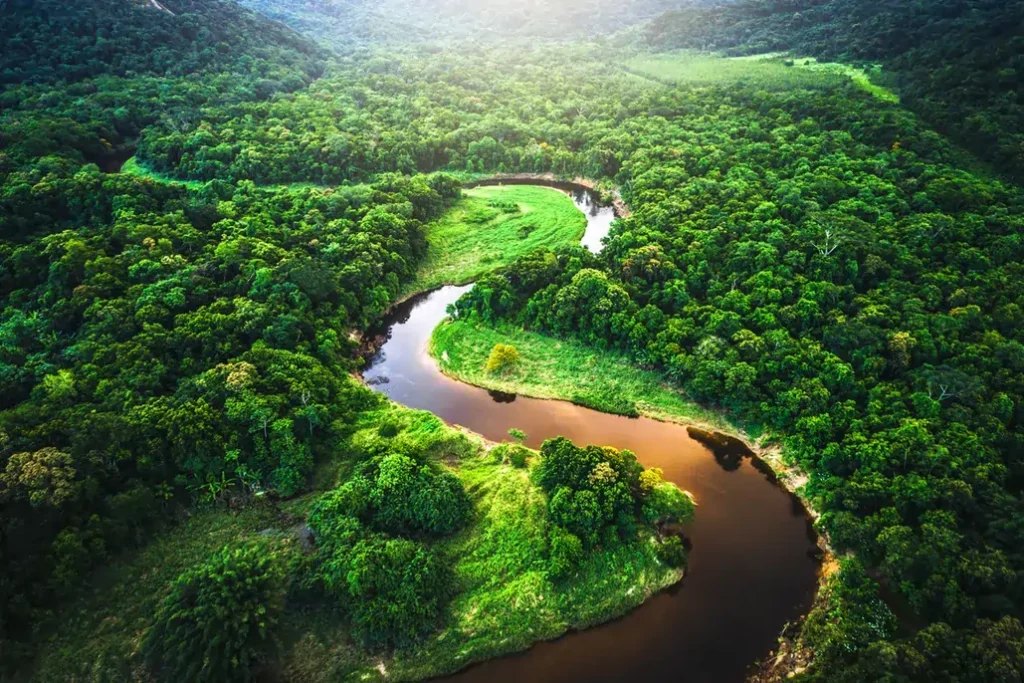
The stark differences between freshwater and saltwater create incredibly diverse aquatic ecosystems. From the sunlit surface of a lake to the ocean’s depths, each environment teems with life uniquely adapted to its conditions. Let’s explore these contrasting habitats‘ characteristic plants, animals, and biodiversity.
Characteristic Plant Life (Algae, mangroves, etc.)
- Freshwater: Freshwater plants are incredibly diverse. Microscopic algae form the base of the food chain, while larger plants like water lilies, reeds, and cattails thrive in shallow areas. Some plants, like duckweed, float freely on the surface. Submerged plants like pondweed are essential for fish habitats.
- Saltwater: Saltwater environments boast a vast array of plant life, too. Seaweeds (macroalgae) like kelp form underwater forests, seagrasses create vital marine meadows, and salt-tolerant mangroves line coastlines, providing essential habitat and protection.
Characteristic Animal Life (Fish species, marine mammals)
- Freshwater: Rivers, lakes, and streams are home to a plethora of fish species like trout, bass, and catfish. Amphibians, like frogs and salamanders, thrive in these habitats, too. Rivers and lakes also support insects, mollusks, and crustaceans.
- Saltwater: The ocean teems with an astounding variety of life. From tiny plankton to giant whales, marine animals display incredible adaptations. Sharks, rays, sea turtles, and coral reefs teem with countless fish species, dolphins, and other marine mammals, making the oceans their home.
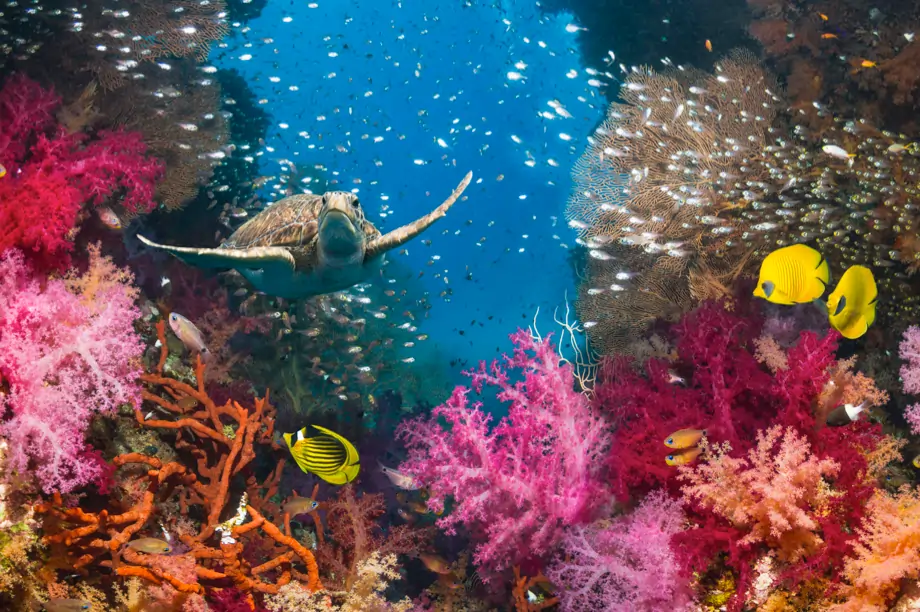
Biodiversity Differences
While both freshwater and saltwater harbor vast biodiversity, saltwater environments generally host a higher variety of species. The ocean’s immense size, range of depths, and varying habitats contribute to this greater diversity. However, freshwater ecosystems often contain species found nowhere else, highlighting their unique ecological value.
⫸ Human Uses of Freshwater and Saltwater
Water is a cornerstone of human activity in its fresh and saltwater forms. Our lives and livelihoods depend on these resources, from the water we drink to the vast ocean trade routes. Let’s delve into the diverse ways we utilize both types of water:
Drinking and Domestic Use
Freshwater is our lifeline. It’s essential for drinking, cooking, cleaning, and sanitation. Without access to clean freshwater, human health and basic hygiene become impossible. Sadly, many regions face freshwater scarcity, making its responsible use paramount.
Agriculture and Irrigation
Agriculture is the world’s largest consumer of freshwater. Irrigation systems channel this water to crops, boosting food production globally. However, inefficient irrigation practices can deplete freshwater sources, highlighting the need for sustainable water management in agriculture.
Industry and Manufacturing
Freshwater is a crucial component in multiple industries. It serves as a coolant, solvent, and cleaning agent in manufacturing processes. Industries like textiles, pharmaceuticals, and energy production rely heavily on freshwater resources.
Transportation and Navigation
⫸ Challenges Facing Freshwater and Saltwater Environments
Our planet’s fresh and saltwater water resources face various challenges. From pollution and unsustainable use to the far-reaching effects of climate change, these threats jeopardize the health of aquatic ecosystems and the vital services they provide to humans.
Freshwater Pollution and Scarcity
Human activities increasingly contaminate freshwater sources like rivers, lakes, and aquifers. Agricultural runoff, industrial waste, and sewage discharge introduce harmful chemicals and nutrients that disrupt ecosystems and endanger human health. Additionally, overconsumption of freshwater for irrigation and domestic use leads to scarcity in many regions, putting freshwater at risk of depletion.
Ocean Acidification and Overfishing
The world’s oceans are absorbing excess carbon dioxide from the atmosphere, leading to a decrease in pH levels—a process known as ocean acidification. This makes it harder for organisms like corals and shellfish to build their shells and skeletons, disrupting marine food chains. Overfishing—the removal of fish populations faster than they can replenish—depletes crucial marine species, endangering both biodiversity and the livelihoods of communities that depend on fishing.
Climate Change Impacts on Freshwater and Saltwater
Climate change is a significant threat to both freshwater and saltwater systems. Rising temperatures alter precipitation patterns, leading to droughts in some areas and floods in others, posing a threat to freshwater reliability. Warming oceans contribute to sea-level rise, coral bleaching, and shifts in the distribution of marine species. Moreover, changes in ocean currents and salinity patterns can have far-reaching effects on marine ecosystems.
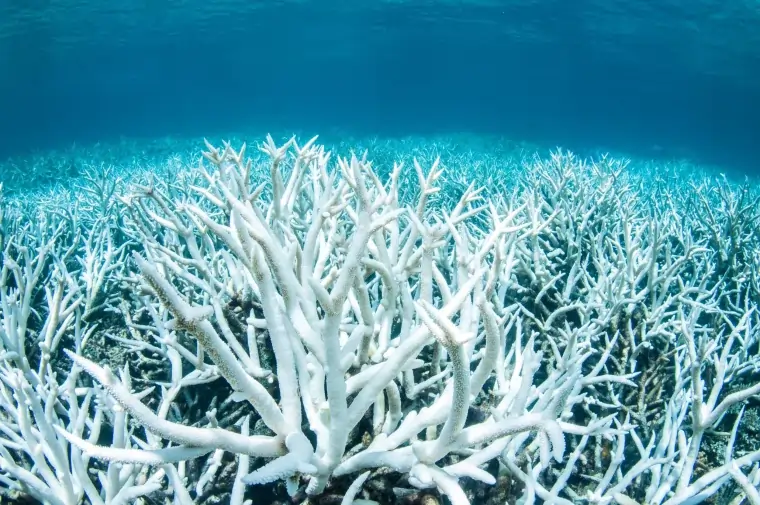
⫸ Conservation and Sustainable Management
The stark differences between freshwater vs. saltwater highlight the delicate balance of our planet’s water resources. To ensure the health of these vital ecosystems, conservation, and sustainable management practices are essential. Here’s how we can take action:
Protecting Freshwater Sources
- Reduce pollution: Pollution from industrial runoff, agricultural chemicals, and household waste severely impacts freshwater. Implementing stricter regulations and investing in cleaner technologies is paramount.
- Water conservation: Promoting water-efficient appliances, responsible irrigation practices, and fixing infrastructure leaks drastically reduces freshwater waste.
Sustainable Fishing Practices
- Combat overfishing: Overfishing depletes fish stocks and disrupts marine food chains. Enforcing catch limits, establishing marine reserves, and reducing illegal fishing protect ocean biodiversity.
- Reduce bycatch: Bycatch (the accidental capture of non-target species) harms marine life. Employing selective fishing gear and supporting sustainable seafood choices minimizes this damage.
Sustainable Practices for Water Resource Management
- Integrated water management: This holistic approach considers all freshwater needs (domestic, agricultural, industrial) and manages resources accordingly to avoid overuse and conflicts.
- Watershed restoration: Protecting wetlands and forests helps regulate water flow, prevents erosion, and filters pollutants for cleaner freshwater sources.
International Efforts to Combat Ocean Pollution
- Plastic pollution treaties: Global agreements aim to significantly reduce plastic waste entering oceans by regulating plastic production, use, and disposal.
- Marine cleanup initiatives: Large-scale efforts to remove plastic debris and ghost nets (abandoned fishing gear) help mitigate further harm to marine life.
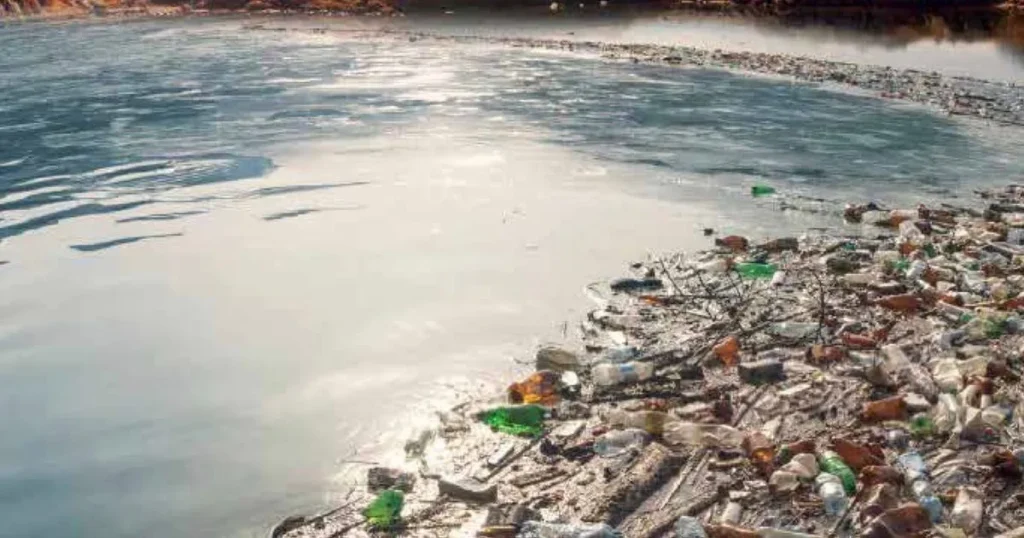
⫸ Conclusion
From the water we drink to the vast oceans that shape our planet, freshwater vs. saltwater environments play irreplaceable roles. Understanding their delicate balance is the first step towards a future where all water resources are cherished and protected.
The Essential Roles of Freshwater and Saltwater
Freshwater sustains life directly. It hydrates us, nourishes crops, and supports countless industries. Saltwater, while not for drinking, houses a stunning array of biodiversity, regulates climate, and provides food and livelihoods for millions.
The Importance of Protecting Our Water
Sadly, both freshwater and saltwater systems face threats. Pollution, overconsumption, and climate change endanger supplies and ecosystems. Protecting our water means responsible use, curbing pollution, and supporting sustainable practices that prioritize the health of our planet.
While they may seem worlds apart, freshwater and saltwater are crucial to our planet’s life support system. Let’s explore why these distinct water types are so vital and how we can safeguard them for the future.


